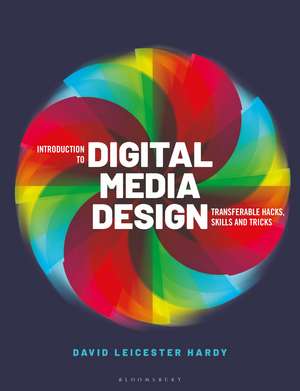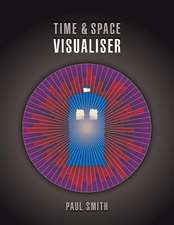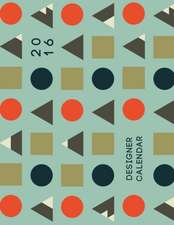Introduction to Digital Media Design: Transferable hacks, skills and tricks
Autor Professor David Leicester Hardyen Limba Engleză Paperback – 5 oct 2022
Preț: 178.06 lei
Preț vechi: 217.53 lei
-18% Nou
Puncte Express: 267
Preț estimativ în valută:
34.07€ • 35.74$ • 28.36£
34.07€ • 35.74$ • 28.36£
Carte disponibilă
Livrare economică 11-25 martie
Livrare express 25 februarie-01 martie pentru 77.35 lei
Preluare comenzi: 021 569.72.76
Specificații
ISBN-13: 9781350104938
ISBN-10: 1350104930
Pagini: 224
Ilustrații: 150 colour illus
Dimensiuni: 189 x 246 x 17 mm
Greutate: 0.64 kg
Editura: Bloomsbury Publishing
Colecția Bloomsbury Visual Arts
Locul publicării:London, United Kingdom
ISBN-10: 1350104930
Pagini: 224
Ilustrații: 150 colour illus
Dimensiuni: 189 x 246 x 17 mm
Greutate: 0.64 kg
Editura: Bloomsbury Publishing
Colecția Bloomsbury Visual Arts
Locul publicării:London, United Kingdom
Caracteristici
Accurately reflects the ways in which contemporary designers work - rather than in depth knowledge of one program or process in a vacuum, they utilize transferable skills and techniques which work together across digital design disciplines. This book makes those connections so readers don't need to feel like they're reinventing the wheel with each new project
Notă biografică
David Leicester Hardy is an assistant professor at James Madison University in Virginia and is a multidisciplinary graphic designer working in web, interactive, print-based, and motion graphics design. With over fifteen years of professional experience, he has worked for advertising agencies, educational institutions, private firms, non-profit institutions, and artists and musicians.
Cuprins
Introduction: Convergence with Tech, Divergence of Media - Progress of graphic design- Rationale and objectives of the book 1. User Interface and Digital Design - Familiar controls, their uses and variations - Text and object size for screen and target size for touch controls - Hierarchy and visual flow in digital design - Strategic use of color and texture - Signal-to-noise ratio in headings, descriptors, commands, etc. - Methods of overlaying text on images - How to reduce visual clutter using modularity and affordance - Interface design process from sketch to high-fidelity product 2. User Experience and Strategy - Rapid prototyping processes and workflow - User research and creation of personas - Data-driven design and experiential praxis - User-centered design that considers empathy and psychology - Screen sizes and performance / task hierarchy - Gestalt theory for functional elements 3. Animation and Motion Graphics - Motion design principles - 2D animation in 3D space - Five basic transformations - Pacing, audio integration, and transitions - Digital storytelling as an emotionally compelling and engaging format - Uses and final output for animation and motion graphics 4. Interaction Design - IxD's relationship to UI - Extending animation for user-interfaces - Microinteraction description and process - Delighting users through perceived tactile experiences - Intuitive systems and patterns - Various methods for prototyping interactions 5. Design for the Web - Layout strategy for various viewport widths - Important takeaways in quickly learning HTML (structure) and CSS (styling) - The concept of semantic mark-up, and how it bolsters visual design - Creative coding and how to quickly iterate "in the browser" - How to design in chunks using the sandwich technique - Tips for designing something that's actually possible to build with code 6. Virtual, Augmented, and Mixed Reality - Conceptualizing virtual experiences for brand / business objectives - Calculating field of motion and periphery - Designing UI with proximity in mind - Workflow beginning from a popular design software - Overview of 3D development platform - Outline of ARkit and Swift technologies Epilogue: Standing on the precipice - Recap the tenets of working in a multidisciplinary way - Predictions for the next 10-15 years - Wrap-up








